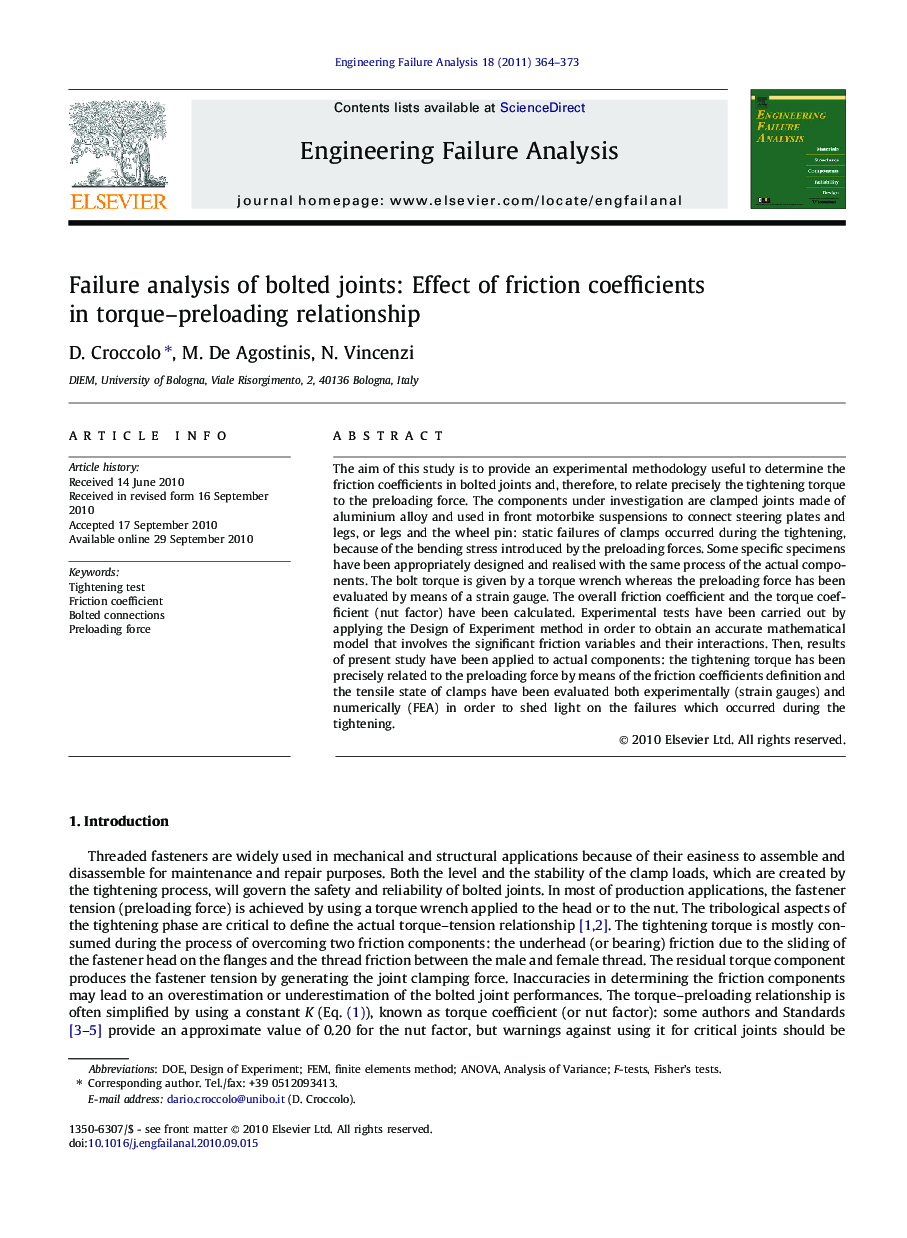| Article ID | Journal | Published Year | Pages | File Type |
|---|---|---|---|---|
| 769188 | Engineering Failure Analysis | 2011 | 10 Pages |
The aim of this study is to provide an experimental methodology useful to determine the friction coefficients in bolted joints and, therefore, to relate precisely the tightening torque to the preloading force. The components under investigation are clamped joints made of aluminium alloy and used in front motorbike suspensions to connect steering plates and legs, or legs and the wheel pin: static failures of clamps occurred during the tightening, because of the bending stress introduced by the preloading forces. Some specific specimens have been appropriately designed and realised with the same process of the actual components. The bolt torque is given by a torque wrench whereas the preloading force has been evaluated by means of a strain gauge. The overall friction coefficient and the torque coefficient (nut factor) have been calculated. Experimental tests have been carried out by applying the Design of Experiment method in order to obtain an accurate mathematical model that involves the significant friction variables and their interactions. Then, results of present study have been applied to actual components: the tightening torque has been precisely related to the preloading force by means of the friction coefficients definition and the tensile state of clamps have been evaluated both experimentally (strain gauges) and numerically (FEA) in order to shed light on the failures which occurred during the tightening.
